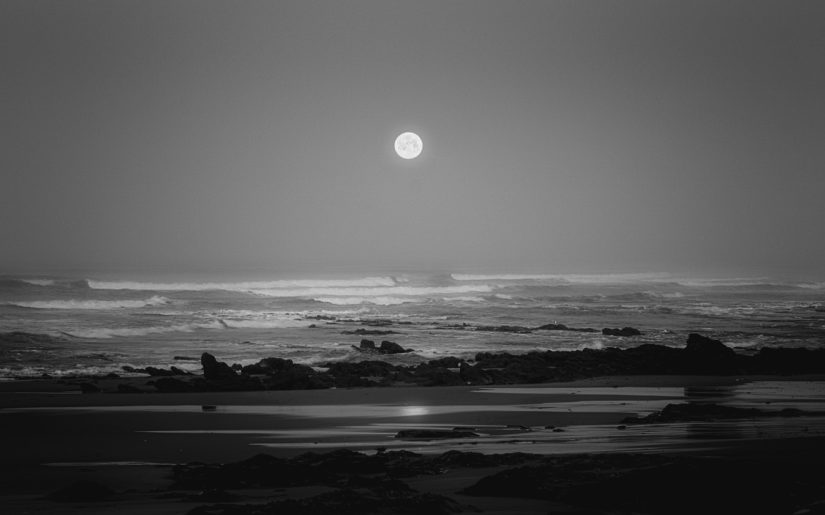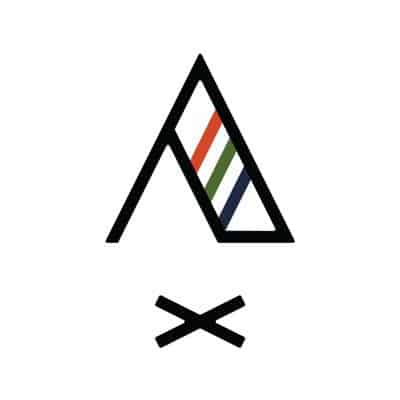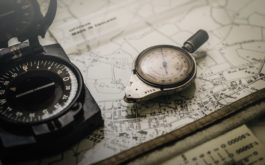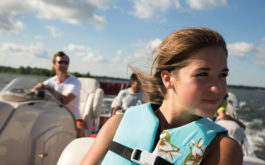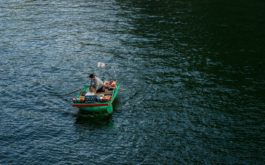Restricted Visibility
Boaters should take additional care when operating at night or during periods of restricted visibility, such as darkness, fog or heavy rain.
If you hear a sound signal during restricted visibility, you should reduce your speed in order to proceed safely. Make sure you keep the engine ready for immediate action in case another boat or hazard comes through the fog or darkness and puts your boat at immediate risk of collision.
Navigation at Night: Head-On Approach
If you meet a vessel and see a green, red and white light, you are approaching another power-driven vessel head-on. In this situation neither vessel has the right-of-way. Both operators must take early and substantial action to steer well clear of the other vessel. Both operators should reduce their speed and steer to starboard.
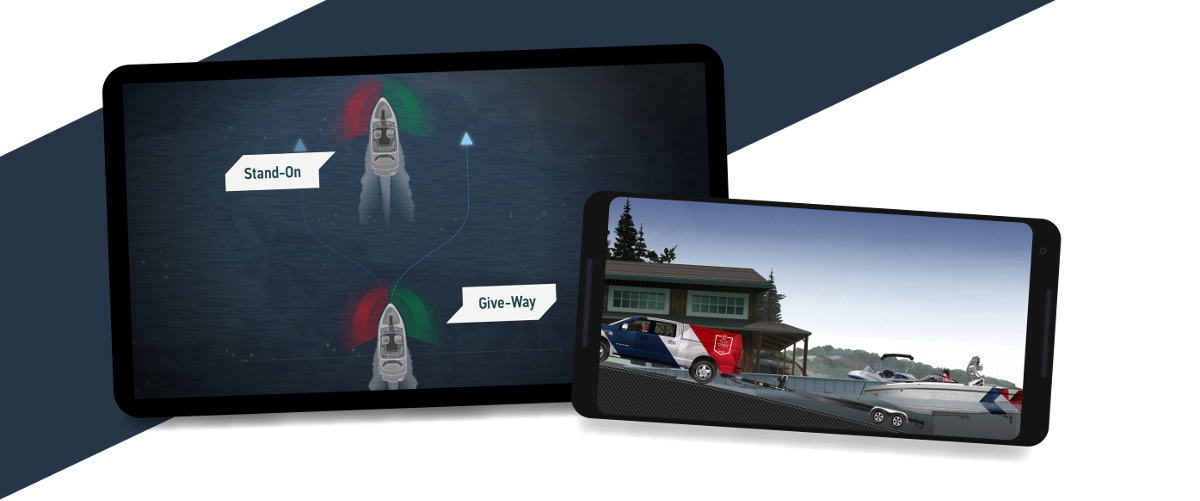
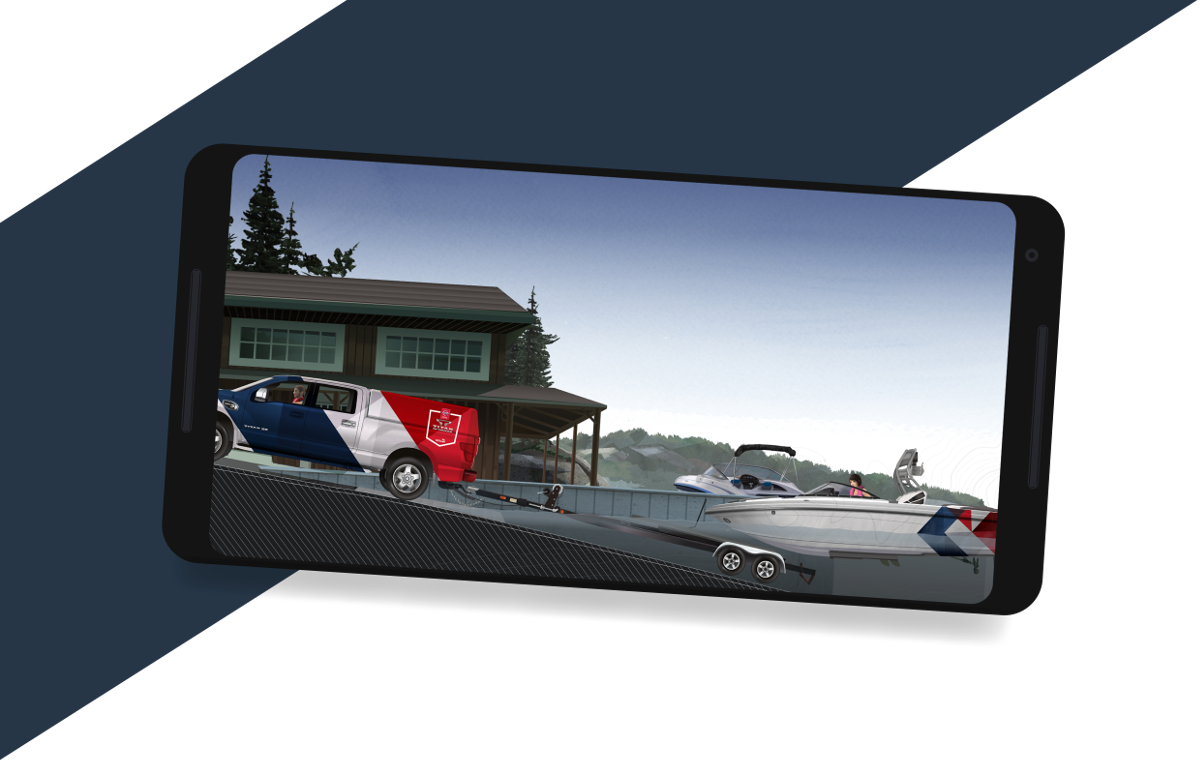
Get your Official North American
Boating License
The Official NASBLA and Transport Canada Boating Course, Test & License.
Get your Official North American
Boating License
The Official NASBLA and Transport Canada Boating
Course, Test & License.
If you meet a vessel and see a green and red light but no masthead (white) light, then you are approaching a sail-driven vessel. You are the give-way craft and must yield right-of-way to the sailing vessel.
Port (Left) & Starboard Approach
If a green and a white light are visible, then another craft is approaching you from the port (left) side. In this situation, you are the stand-on craft and should maintain your speed and course. The other craft should take early and substantial action to steer well clear of your craft.
If a red and a white light are visible, then another craft is approaching you from the starboard (right) side. In this situation you are the give-way craft and must yield right-of-way. You should take early and substantial action to steer well clear of the other craft. Reduce your speed, change direction and pass at a safe distance behind the other boat.
Safe Boating Tip:
A simple way to decipher powerboat navigation lights is to remember: If you see a GREEN LIGHT you can ‘GO’: another boat is approaching from your port side.
If you see a RED LIGHT you should ‘STOP’: another boat is approaching from your starboard side.
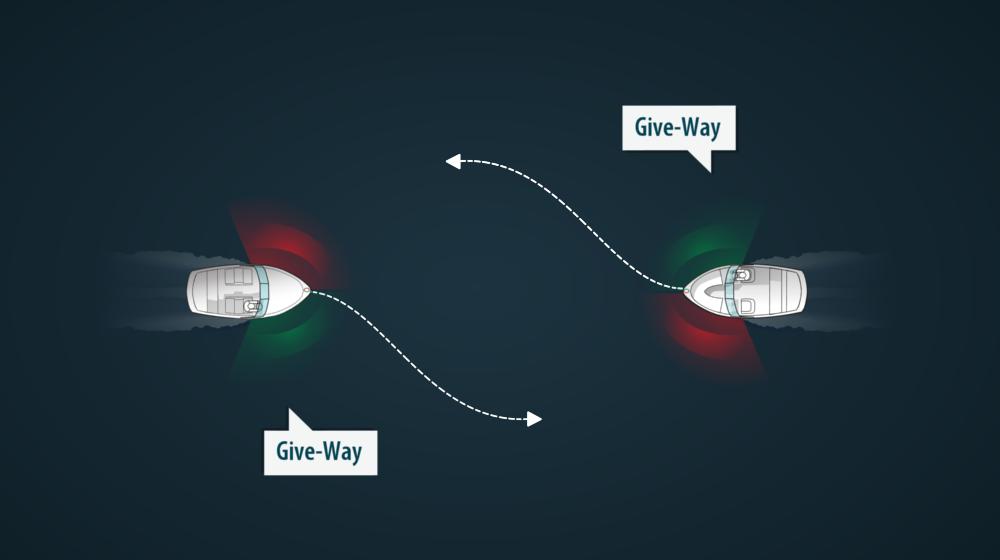
Navigation Lights
Power-driven boats must exhibit a forward masthead light, sidelights and a sternlight.
Many small boats (such as bow riders and runabouts) typically have a white light affixed to the top of a light pole that can be placed at the stern of the craft. When underway, this all-round light functions as a combined masthead and sternlight, and must be visible in all directions, mounted higher than the boat structure, cockpit or any other obstruction.
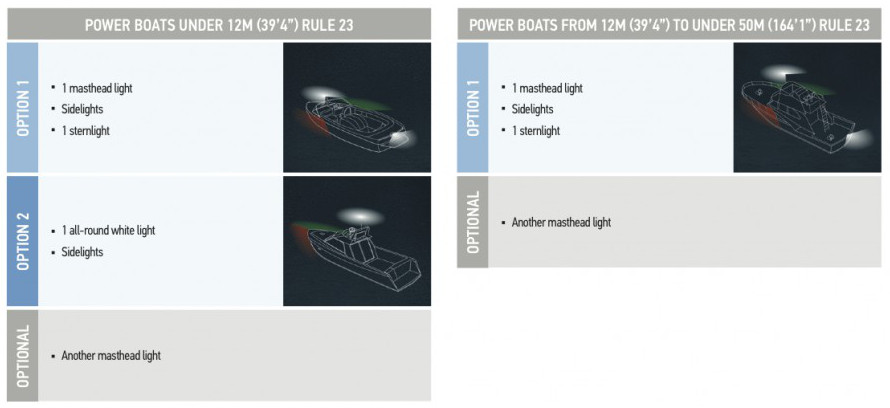
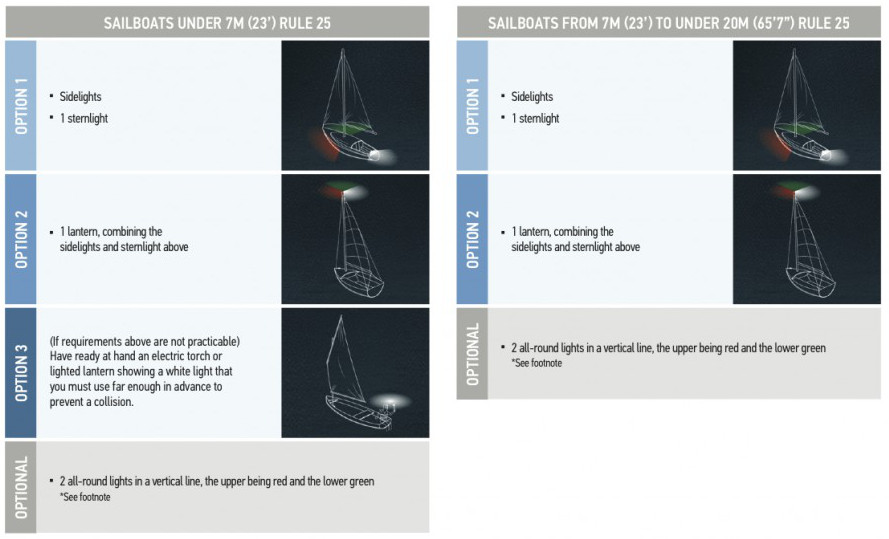
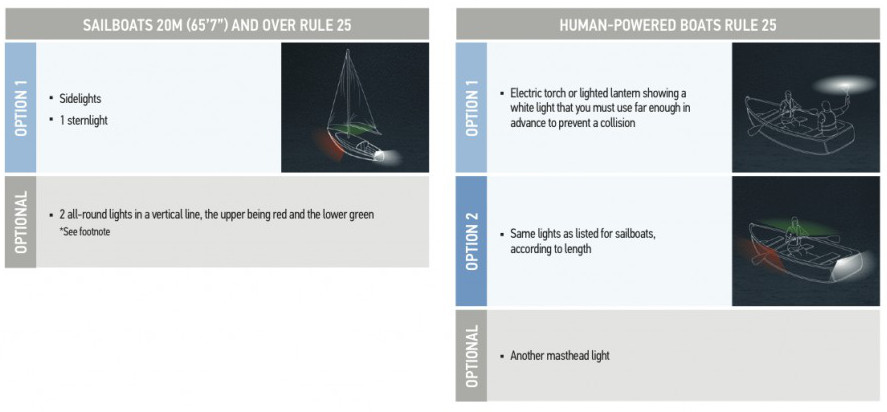

What does a White Light Indicate?
If you see a white light on its own it indicates that you DO NOT have the right-of-way. The white light will be identifying one of the following three things:
1) You are approaching another craft from behind
If only a white light is visible, you may be approaching another craft from behind. You are the give-way-craft and must take early and substantial action to steer well clear by altering your course and passing at a safe distance on the starboard (right) or port (left) side.
2) You are approaching a non-powered craft
If you are approaching a non-powered craft, you are the give-way craft and must yield the right of way. You should take early and substantial action to stay well clear and pass at a safe speed and distance.
Remember that if you’re operating a non-powered craft at night, you are required to have an electric torch ready for use, flashlight or lighted lantern showing a white light (this rule applies if the boat cannot be equipped with standard navigation lights).
3) You are approaching an anchored craft at night
If you are approaching an anchored craft, the anchored craft will be exhibiting an all-round white light to indicate to other boaters that their craft is at anchor.
Remember: anchored boats should never display their green and red sidelights as these lights will indicate to other boaters that your craft is underway.
Search and Rescue (SAR) Vessels
When responding to emergencies, search and rescue vessels, as well as police and government vessels, exhibit blue light(s). You should steer well clear of a vessel with a blue flashing light.
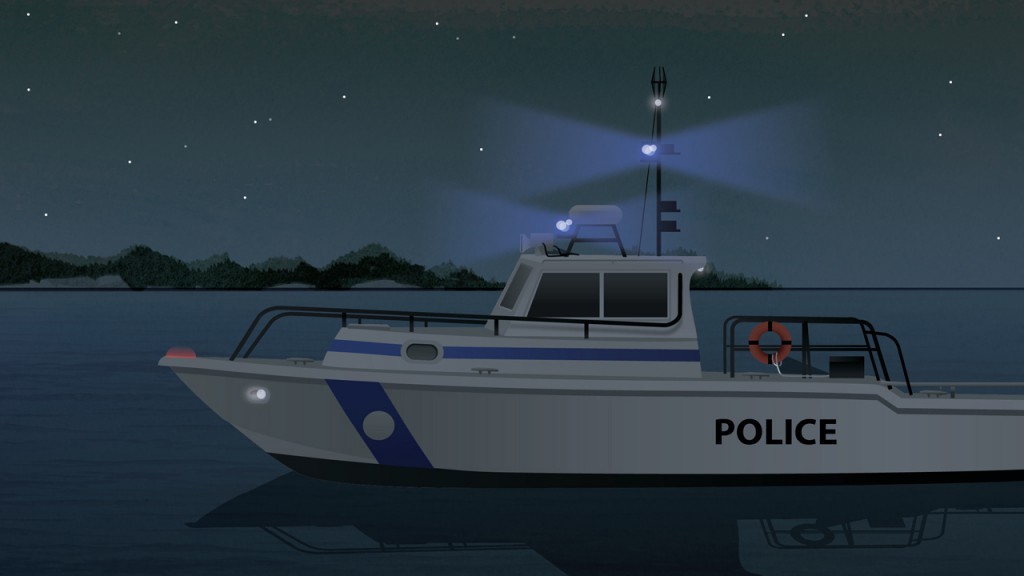
When Towing
If towing another vessel from your stern, you must show:
- Sidelights and a sternlight
- One yellow towing sternlight
- Two masthead lights in a vertical line
If being towed, you must exhibit:
- Sidelights and a sternlight
- A diamond shape
- If you do not have sidelights you must exhibit two aids to navigation, one each at fore and aft
When a boat that doesn’t normally tow other boats is engaged in towing, it must display the regular navigation lights and indicate the nature of the relationship between the towing boat and the boat being towed (such as illuminating the towline).
Vessels Being Pushed
When using a powerboat to push another vessel ahead or tow alongside, you must exhibit:
- Two masthead lights in a vertical line, sidelights and a sternlight
Approaching Human-Powered Boats
When approaching a human-powered boats, you’re the give-way craft and must yield the right-of-way. You should take early and substantial action to stay well clear and pass at a safe speed and distance.
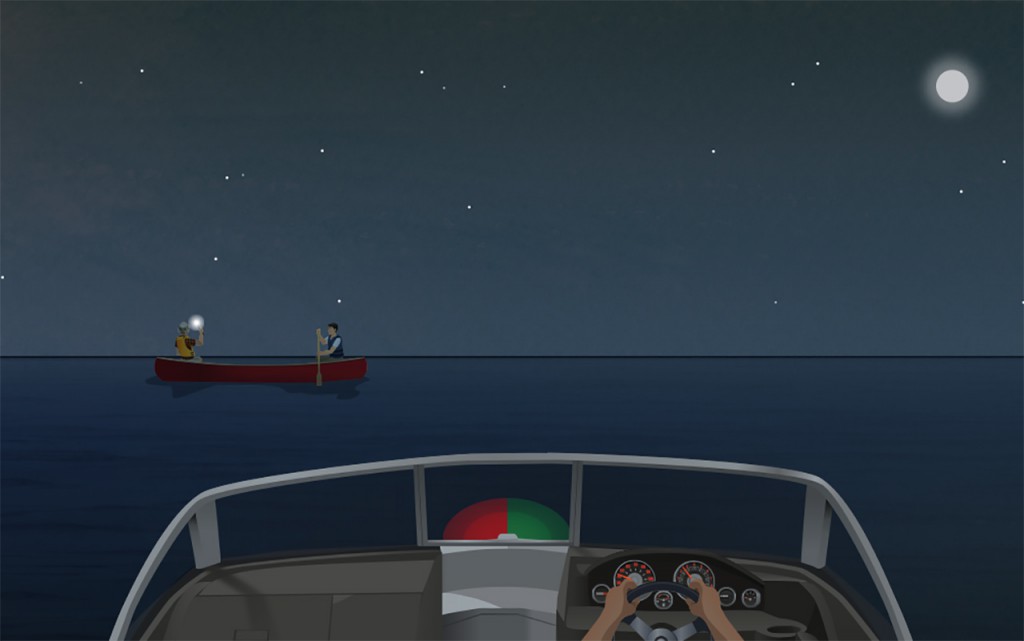
Remember that if you’re operating a human-powered boat at night, you’re required to have a working, electric torch, flashlight or lighted lantern showing a white light (this rule applies if the boat cannot be equipped with standard navigation lights.).
